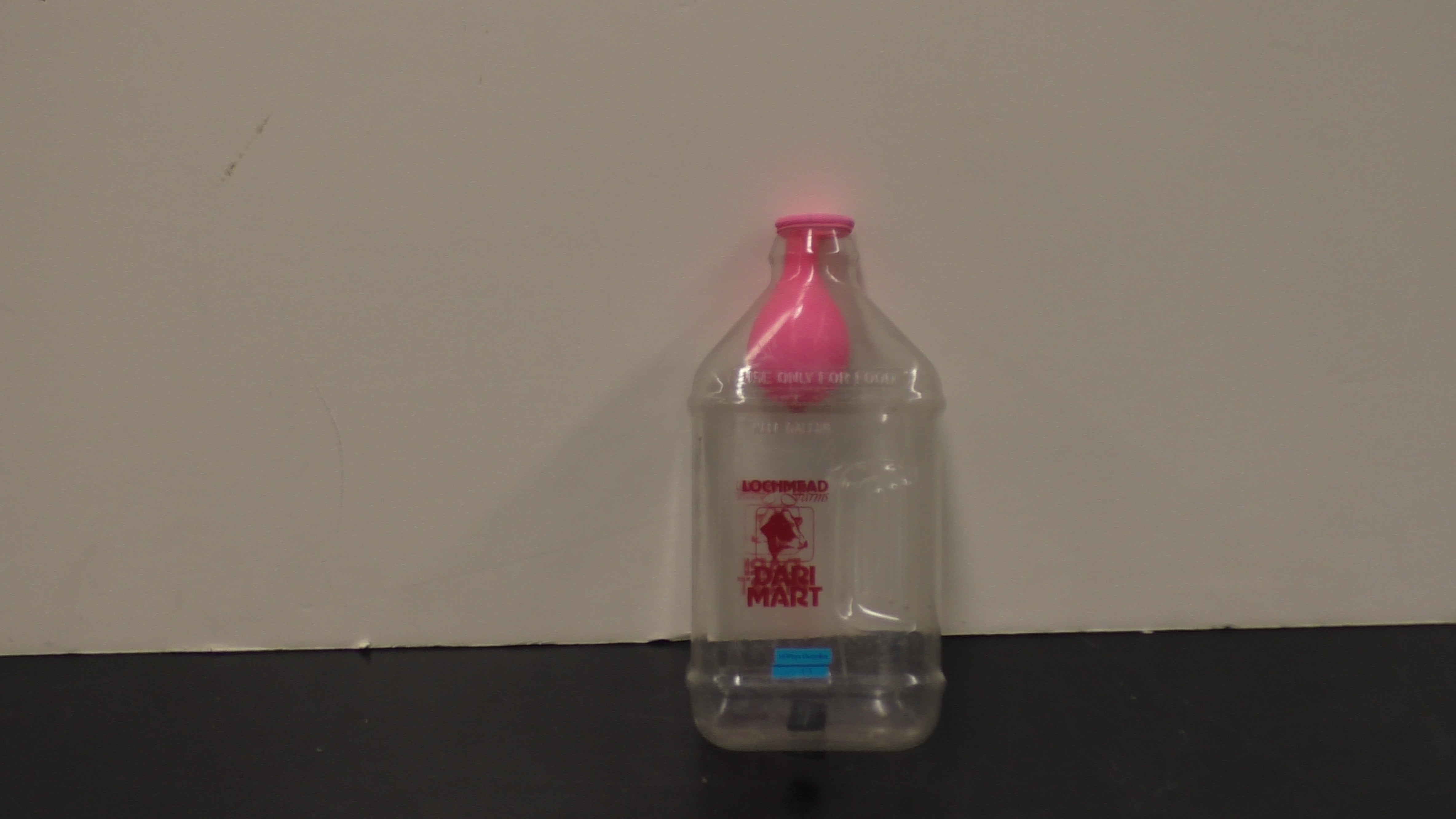Difference between revisions of "Pressure Bottle"
From UO Physics Demonstration Catalog
| Line 1: | Line 1: | ||
{{NewDemo|subject=Fluid Mechanics|topic=Fluid Statics|file1=harbott.GIF}} | {{NewDemo|subject=Fluid Mechanics|topic=Fluid Statics|file1=harbott.GIF|file2=Pressure_bottle1.JPG}} | ||
Harr Bottle. This demo demonstrates reduced air pressure. When the rubber stopper is in the bottom, the air pressure inside the bottle prevents you from blowing up the balloon. The balloon can be inflated when the stopper is out. After the balloon is inflated, and the stopper reinserted, it will remain inflated even though the balloon end is still opened to the air. When the stopped is taken out, the balloon will deflate. (The balloon can be filled with water before taking out the stopper, and that will produce a geyser when the stopper is removed.) | Harr Bottle. This demo demonstrates reduced air pressure. When the rubber stopper is in the bottom, the air pressure inside the bottle prevents you from blowing up the balloon. The balloon can be inflated when the stopper is out. After the balloon is inflated, and the stopper reinserted, it will remain inflated even though the balloon end is still opened to the air. When the stopped is taken out, the balloon will deflate. (The balloon can be filled with water before taking out the stopper, and that will produce a geyser when the stopper is removed.) | ||
Latest revision as of 11:49, 1 February 2023
Return to Fluid Statics
Description:
Harr Bottle. This demo demonstrates reduced air pressure. When the rubber stopper is in the bottom, the air pressure inside the bottle prevents you from blowing up the balloon. The balloon can be inflated when the stopper is out. After the balloon is inflated, and the stopper reinserted, it will remain inflated even though the balloon end is still opened to the air. When the stopped is taken out, the balloon will deflate. (The balloon can be filled with water before taking out the stopper, and that will produce a geyser when the stopper is removed.)
NOTE. Can also physically show the concept of how a capacitor can store charge.
Location:
- Shelf T-1

